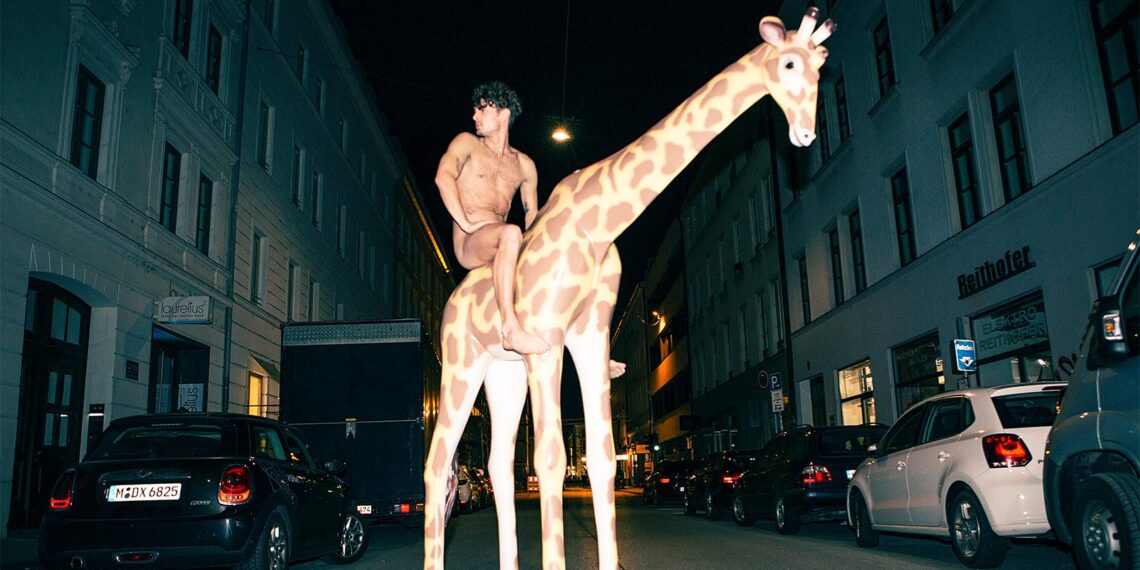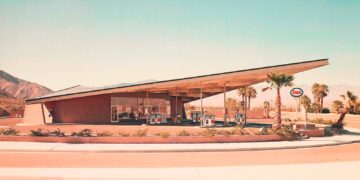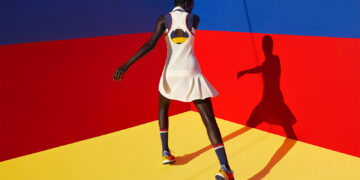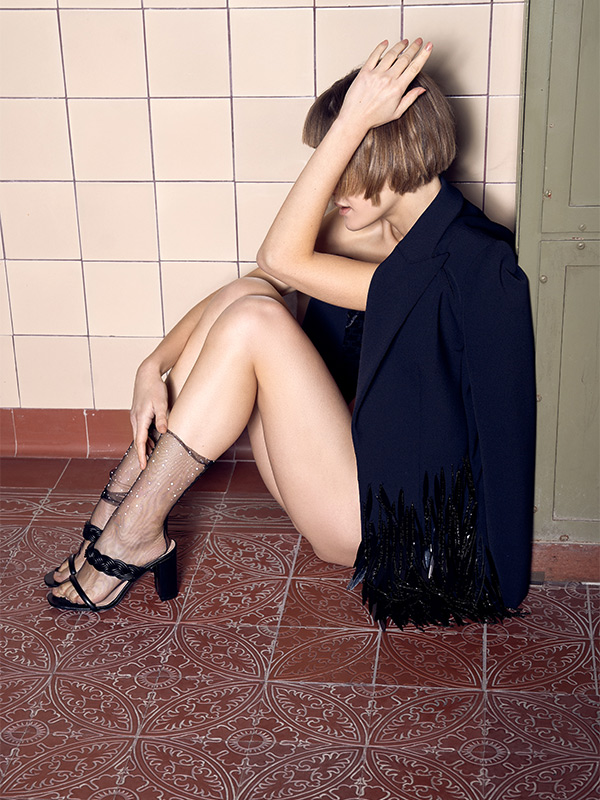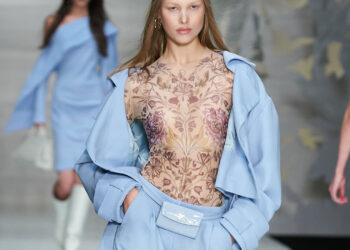You can’t shake off the feeling that Simon Lohmeyer has cracked the formula for happiness. This may be due to the light-heartedness of his photos, the essence of which is joy. Or his way of seeing life for what it is: an opportunity. Right now, the Bavarian is cruising around the world in a VW bus, keeping his feet still for a short time at most to answer our most burning questions.
FACES: Is photography more about art or craft?
Simon Lohmeyer: Photography in its true form is art, the craft comes naturally. I don’t believe that you have to learn photography. You have an idea and work your way towards the desired motif. Out of focus, blurred and sometimes a high ISO are part of this art – people who see this as bad craftsmanship are narrow-minded.
F: Do you shoot digital or analog and why?
SL: As a child of digital photography, I was strongly influenced by it from the very beginning. Over time, I became very tired of the sheer volume and inexhaustible scope of the digital world. I switched from autofocus to manual focus and found my great love in analog photography. For many of my nudes, everything has to happen pretty quickly, which is why I opted for digital for my nude photo in Rome in front of the Trevi Fountain, for example. But when I’m standing alone with an undressed model on a deserted volcanic beach in Iceland, there’s plenty of time for analog. I love both.
F: What was your first camera, and how did you get into it?
SL: I got my first camera from my father when I was almost ten years old. As a youngster, my friends and I were big fans of the Jackass hype. We recreated many things with the camera. Today, the material would be great for funny breakdown clips and photos.
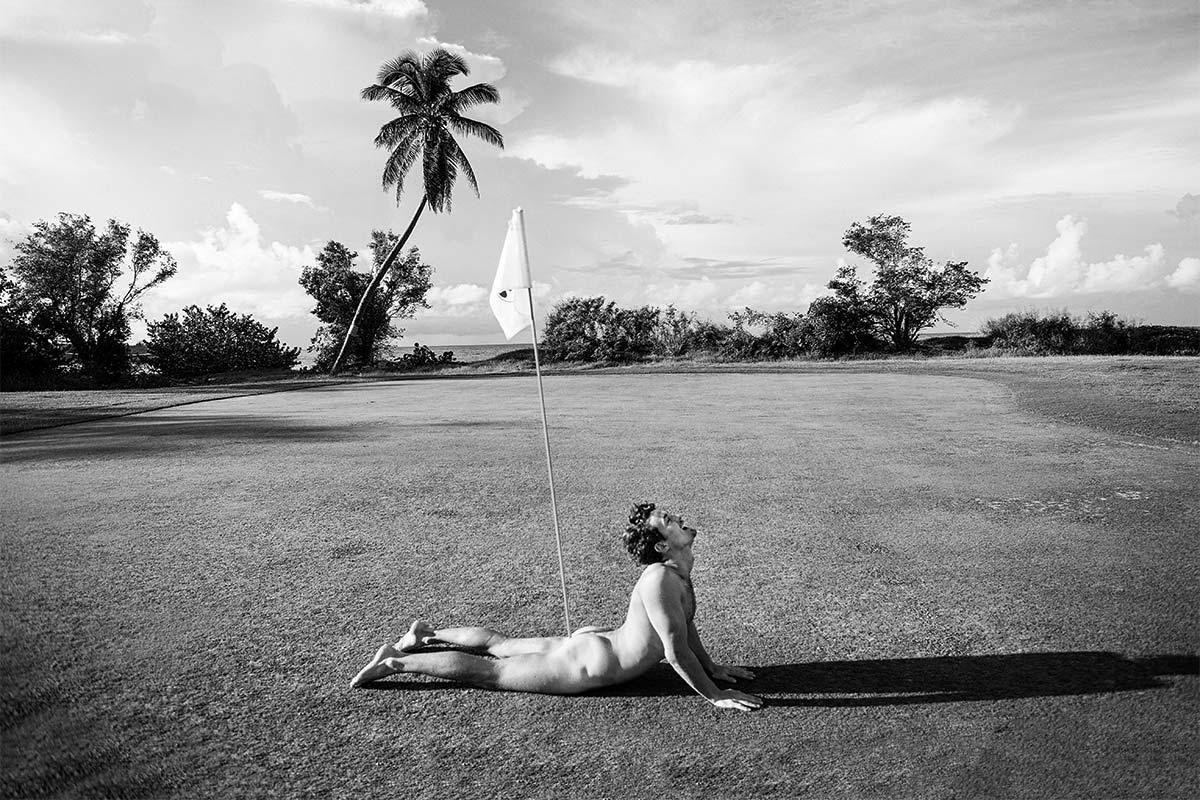
How to take a good photo
F: What is the biggest challenge for you in taking a good photo?
SL: The biggest challenge is to give the people in front of my lens a trusting and good feeling when I portray someone or have them naked in front of the lens. The picture will only be good if you get involved with each other.
F: Which photographer do you idolize?
SL: The two people I personally have probably learned the most from are Daniella Midenge and Nicolas Guérin. I spent a lot of time with both of them. Daniella taught me how to fall in love with a person for the moment of the shoot; this gives you the power to bring out the best in the person. I learned from Nicolas how to produce a masterpiece from the most unexciting moments. Other photographers whose work I greatly appreciate are Ren Hang, Ellen von Unwerth, Tim Walker, Guy Bourdin, Steve McCurry and Harry Gruyaert.
F: Which famous photo fascinates you the most?
SL: What I love most about famous images are probably documentary moments that influence our society, take us by the hand and teach us better or bring about a turning point. Examples include the fraternal kiss with Brezhnev and Honecker, the napalm girl from Vietnam, the execution of Saigon and the photo that Neil Armstrong took of his colleague on the moon.
F: Which of your cameras did you save up for the longest?
SL: That was probably my first Leica. This was also a new phase in my photography – with Leica, the photographer ego really began to solidify.
About nude photos, the perfect location and the art of taking the nervousness out of your models
F: How do you manage to take away any nervousness from your models?
SL: This is only possible if the model is in an absolutely secure safe space with me. Sincere communication and respectful interaction are essential. There is a lot of mischief in nude photography in particular. Nevertheless, everyone has their own peculiarities. I, for example, also get naked from time to time when taking photos, as a form of compensatory justice, so to speak.
F: How do you take a good nude photo?
SL: Location plays a big role in my photography. If I then manage to create a humorous, super aesthetic or very natural situation together with my model, I usually end up with a good nude photo.
F: How do you find locations for your shoots, and where do you prefer to shoot?
SL: That usually happens spontaneously. On my travels, a place or a situation overtakes me, and then the funniest task begins: finding someone to fill the moment as my nude model. However, this usually happens relatively quickly now.
F: How long do you edit your photos before you publish them?
SL: When I started photographing, I spent a lot more time editing pictures. Today I just do my color correction and I’m done. You also get better at photographing exactly what you want to end up with.
F: Where do you get the inspiration for your photo projects?
SL: Good inspiration can come from anywhere. From movies and books, but especially from the moment. When I have a location in front of me that I like, I see the model in my mind’s eye and know exactly how she has to move in front of the camera. I almost always do the posing – the models love it.
The reward, the fame and successful posing
F: How much do you earn as a professional photographer?
SL: There is no upper limit.
F: Who is more important: the photographer or the model?
SL: Both in equal measure!
F: When and how are the best photos taken?
SL: In the carefree lightness of being, in a good atmosphere with great people and some music!
F: What separates a mediocre photographer from a great one?
SL: When I was traveling with Peter Lindbergh for a job for Porsche on the French coast, I learned from probably the most famous photographer in the world that photography has nothing to do with which photo others want, but which one you want to take yourself. If you can’t do that, then don’t take the photo.
F: You were a model yourself. What is your best tip for successful posing?
SL: Quite simply: be yourself. If something feels uncomfortable, all posing is for the ass.
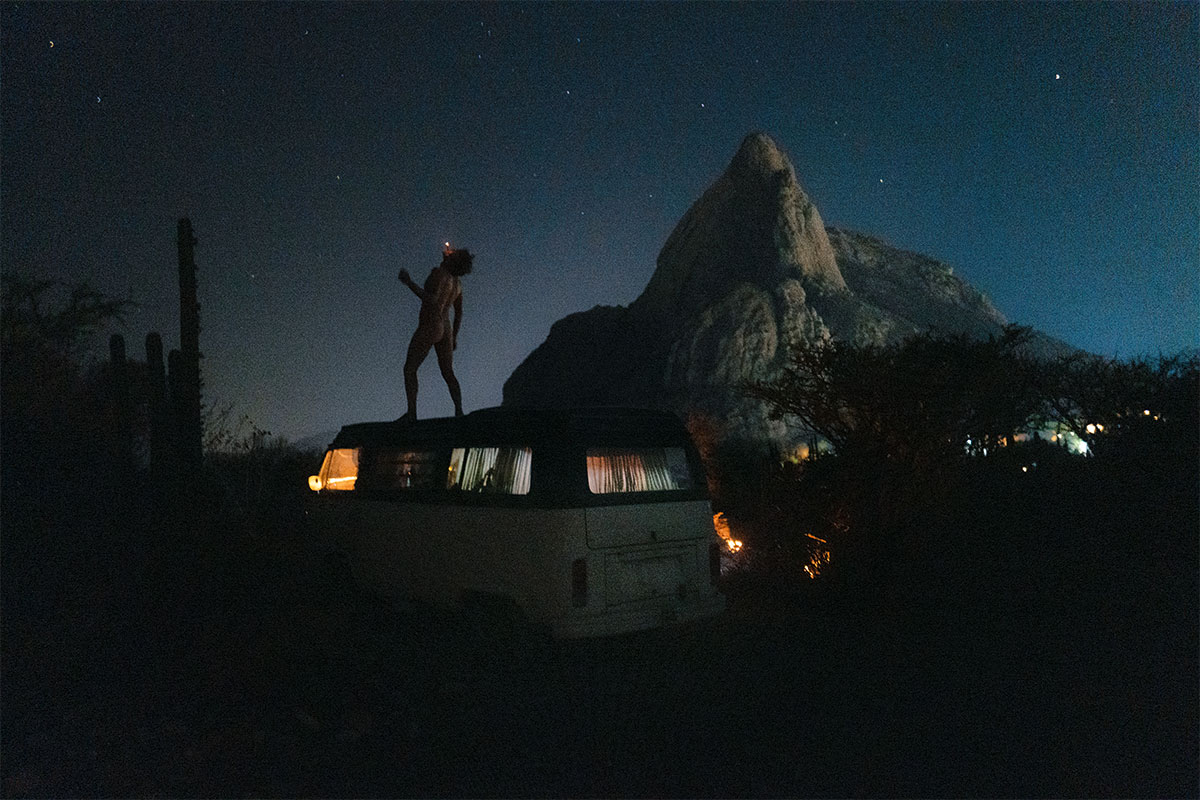
The jack-of-all-trades reveals his formula for happiness
F: You have modeled, written and photographed for GQ, were even a restaurateur with two bars, had your own creative agency until last year and wrote a book at the age of 30. What can’t you do?
SL: I’m now traveling the world in my VW bus for two years to get away from the commercial life I’ve been living for the past few years. I dedicate the trip to all the things I can’t do yet but would like to learn. The next step is to practise the guitar.
F: Where does your hunger to try out so many different professions come from?
SL: It can be exhausting to always feel this restlessness when I’ve mastered something 80 percent, only to open the next barrel straight away. But hey, what can I say, that’s me and I always make the best of it!
F: You talked about your current trip around the world. What’s the best thing about living in a van and what’s the most annoying?
SL: There’s no such thing as annoying – if something pinches, it’s changed.
F: What is it about life on the road that is so different from what you would expect?
SL: Basically, you know what you’re getting into. I always find it counterproductive to have expectations. What comes, comes, and I deal with that.
Home is where the toothbrush is
F: What do you say to people who are critical of the term travel influencer?
SL: I would also take a critical view. The word “influencer” is already a thorn in my side. And apart from that: you shouldn’t stop travelers.
F: Where did you like it the least on your travels? And where are you absolutely sending us all?
SL: You determine the outcome of your journey yourself. Everyone had warned me not to go to the slums and townships in Colombia or Cape Town – not very comforting and tidy places. Nevertheless, I found a lot of joy and friends in these places and celebrated parties that had more emotion and exuberance than I ever felt in the clubs in Meatpacking New York, Tulum in Mexico or Ibiza. My favorite country has been Mexico for at least a decade. This country holds so much magic, great food and has more to offer in terms of scenery than I have ever experienced before. Iceland is also a fantastic place – so much fresh air and expansive views over a crazy and otherworldly nature.
F: What do you miss about home when you’re away?
SL: Dumplings with sauce!
F: You lived in Cape Town and New York, then in Australia and Mexico. Where is your home and why?
SL: Home is where my toothbrush is. As a traveler, that’s probably the lot you draw.
F: At what moment on your travels did you feel fear? And when and where is the greatest bliss?
SL: I was never really afraid. I believe that if you don’t deal with your fears, you will never get rid of them. The first night in Mexico City was unsettling. I landed at night, and all the scary stories I had heard and been told made me think of everyone and everything as murderers and criminals. None of this turned out to be the case – I stayed in the city for a year and a half and had the best time of my life.
The best story from the road
F: What encounter that you have had on your travels has had the most impact and impression on you?
SL: My time on the garbage dumps in Cambodia was the most formative. There I filmed and photographed a documentary about how children work and grow up in this environment. It was very moving and also incredibly instructive for my own actions.
F: What story from the road do only your best friends know so far?
SL: The funniest stories I share with my best friend Mario are the ones where we always find a way to talk our way free of the police. Whether we were speeding, driving the wrong way or driving illegally abroad – we always managed to find a wonderful way out. That is also the reason why the word “chutzpah” is emblazoned on my chest as a tattoo.
F: How do you describe your formula for happiness?
SL: Live in the moment, that’s all you have left anyway. But I also filled an entire book with it: “Irre Gut – Deine beste Zeit ist Jetzt”. That’s over 200 pages filled with ideas that might help you to be happy.
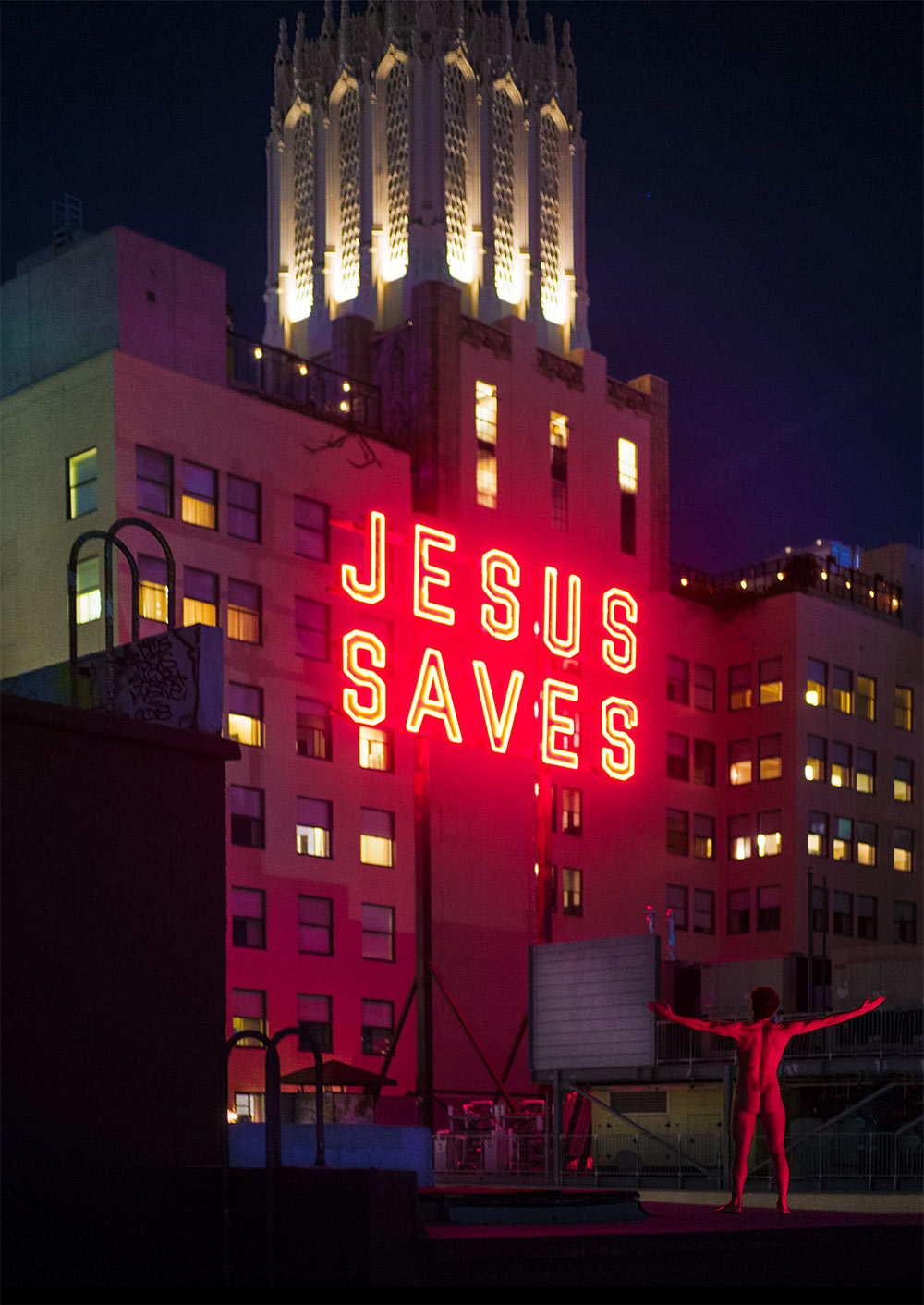
You can find more from Simon Lohmeyer at simonlohmeyer.com or on Instagram @simonlohmeyer
You can find even more fashion and the most beautiful fashion editorials here.
Photos: © Simon Lohmeyer


